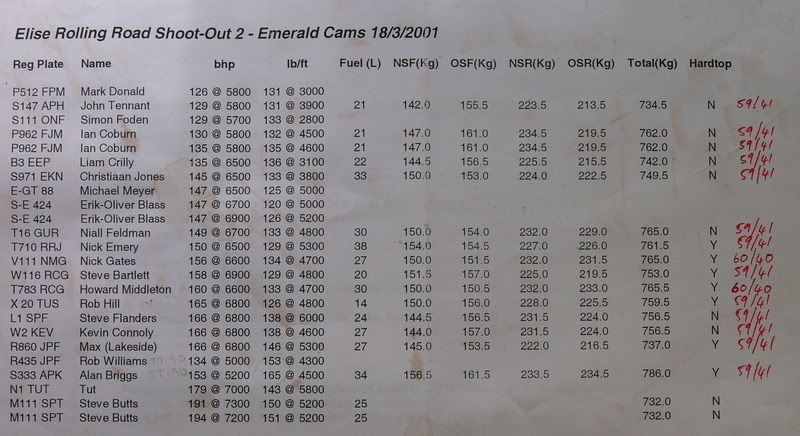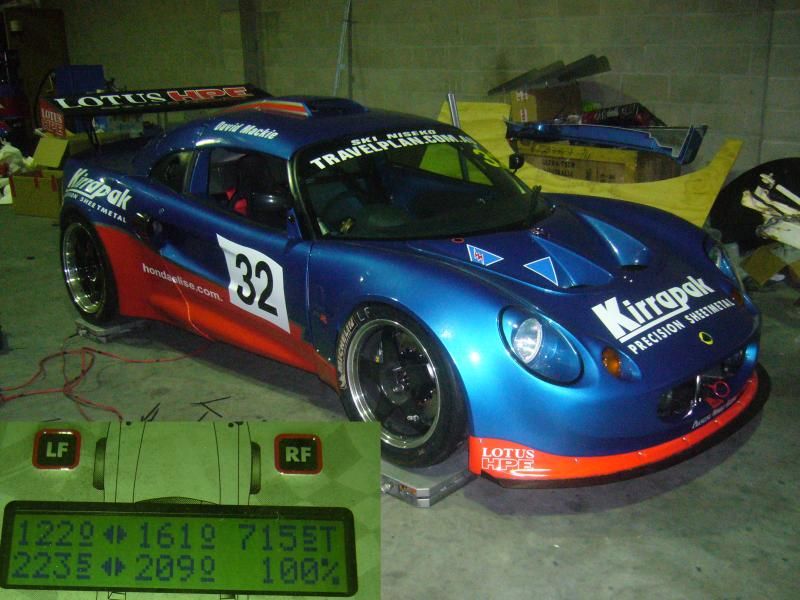KingK_series wrote:MacLotus wrote:I just pulled the numbers... Cross balance LR/RF - 904lbs - 49.7% - Total wet weight - 1819lbs with driver
Front to rear is 46/54 (w/o driver), but my Elise was the lightened Sport190... a little different from OE.
how much does the car weigh with no driver?
all the weights in the sheet are with no driver but some fuel.
very little weight to be saved from the front end - bar battery, so very curious....?
Properly designed car should be 55/45.
I'm assuming when you say 55/45, you mean 45% of the cars weight is on the front wheels, and 55% is on the rear. Measured that way, I'm 46%F/54%R. Balance is not simply measured F/R. Balance (or corner balance) is measured typically LR to RF. Mine is 1742lbs, 49.7 cross balanced.
All this aside, you assumed my body changes added significant weight to the rear only. That is inaccurate, so balance is moot until the new corner balance numbers are in. In fact, if I had to wager, I'd guess the front clam received more weight than the rear.
As for drag, any aerodynamic modification (e.g. Wing, splitter, etc) will cause additional drag. The key is if it is done to effect change on a cars performance. You appear to believe the Elise was designed aerodynamically for the track at high speed. In fact, it was not. The Elise has a front end that funnels air under the car vs. around the car. That increased pressure under the car manifests in rear lift (the reason Lotus added a spoiler to the Elise design). The Exige actually requires a wing to compensate. It's not for looks. Engineers also added front aero to compensate for aero inefficiencies of the Elise design.
Bottom line, the Elise is a street/production car designed for sub-80mph aero performance. Get it to 135mph and it's freaking SCARY. It wants to get airborne. The front end has been redesigned to move air around/over the car and not under the car. It's similar to the GT1 front end, or Porsche GT1 front ends. Additional drag, yes. Additional front aero performance... 100% better. 400+ whp will compensate for that drag, creating better airflow at 150mph. American race tracks have up to one mile straights. Want good track times, you better make use of high speed.


